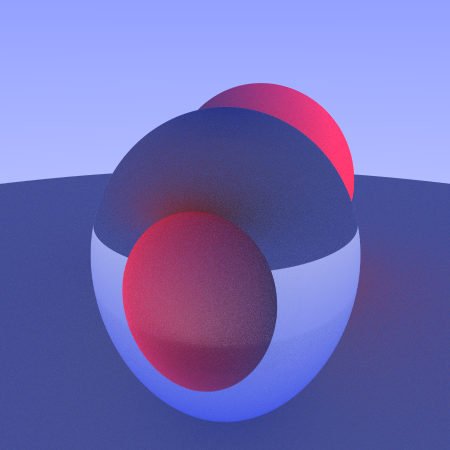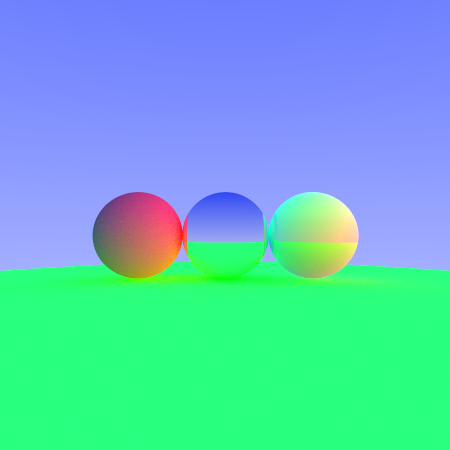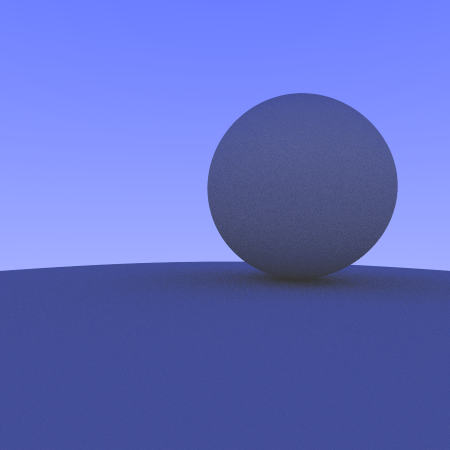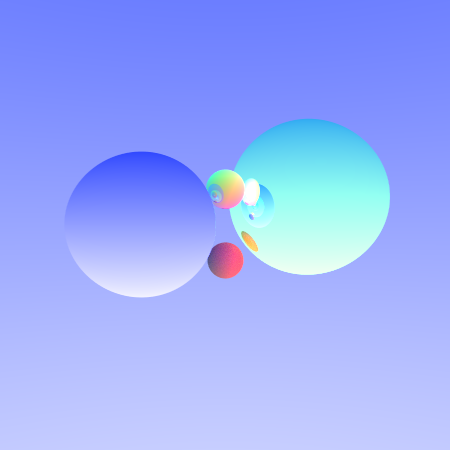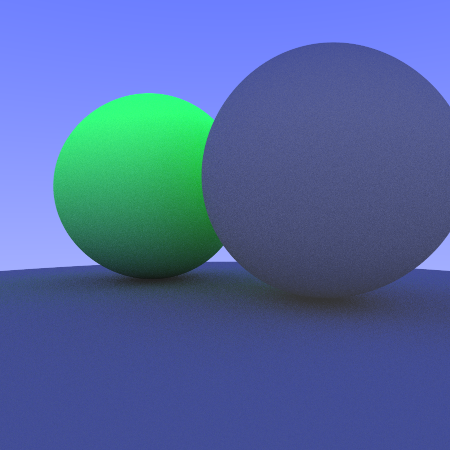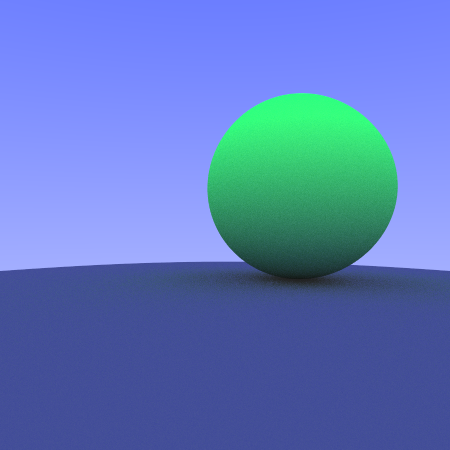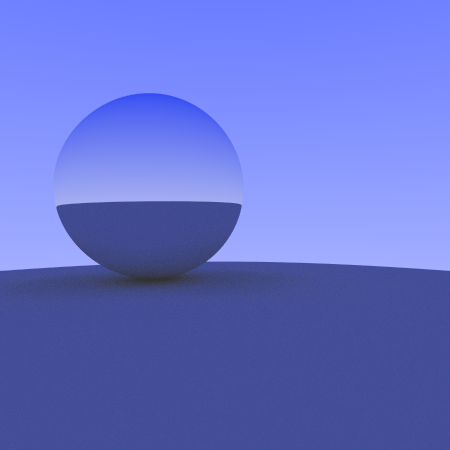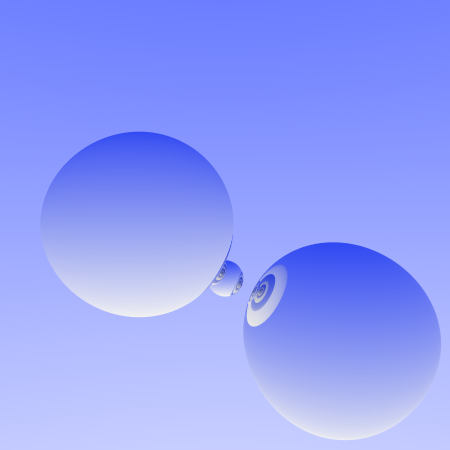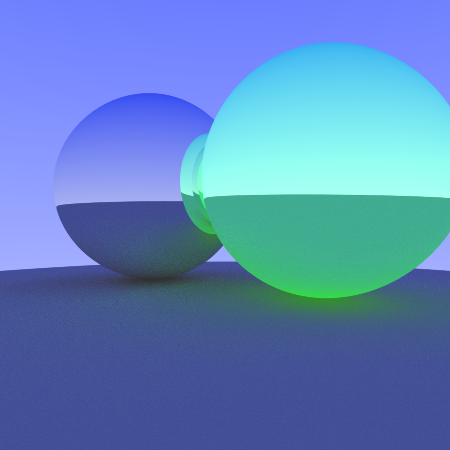Everyone writes a raytracer sooner or later. This is mine.
sh create.shpostgres_connection.sh contains host/database/user/pass/etc.
There are no exotic needs other than "postgres, like version 10 and up
or something"
For what it's worth, I created mine thus on my ubuntu desktop:
sudo su - postgres
createuser --pwprompt raytracer
createdb -O raytracer raytracerWhile doing development, obviously a few-minute render time is a pretty poor cycle time. There are a few levers you can pull to speed things up and reduce quality. They're on "camera" and "img" in setup.sql:
- samples_per_px - This is the number of rays/sub-samples per pixel.
- 1 or 2 is fine during debugging
- 15-20 gives "workable" pictures
- Going above 50 doesn't generate much visible improvement
- max_ray_depth - The maximum number of ray bounces
- For simple scenes, it usually makes no more than 5 or so bounces
- res_x and res_y - Final image resolution
- Smaller is faster
The main CTE carries a lot of stuff that's unnecessary to final output. This is so I can examine rays bouncing through the scene with:
SELECT * FROM rays WHERE img_x=100 AND img_y=250This is implemented in pure SQL. It doesn't do anything like CREATE FUNCTION or other nonportables, except for the trigger to do animation, which obviously doesn't count.
At the same time, there are some not-entirely-common features of SQL that it needs:
- JOIN LATERAL
- PARTITION BY inside of a RECURSIVE CTE
- Math functions like SIN()
So although I started developing this in SQLite, I ended up leaning on PostgreSQL. As I write this, it works in postgres and hasn't been tested in anything else.
Such as it is, I did find myself solving some problems in interesting ways.
JOIN LATERAL is a way to do a correlated subquery in a JOIN, instead of just in a WHERE clause. I use this as a way to hoist calculations and do many of them only once and, in some cases, avoid excessive duplication.
This requires sampling a uniform sphere. I generate a lot of random samples ahead of time [sample with rejection -> scale points to sphere surface], and number them.
Figuring out a way to join each ray to a single random row from these precalculated scatters was weird; can't just join to RANDOM() because every ray got joined to the same, random, scatter. Can't just select with a typical calculation on a normal because that leads to stripes in the picture. So, instead, I schlep out a later few decimals of one dimension of a normal, then join to that. It's "random" but also unique-enough-per-ray.
Raytracing very naturally tracks how recursive CTEs work. One of the things I ran into was a clean way to identify which ray is the one to account for. Using a window function ordering by intercept (t) worked well. Every iteration, this query intersects a ray with everything in front of it and does all of the associated calculations, but then in the WHERE clause will reject everything except the thing the ray actually hit.
Also, there's something really beautiful about the simplicity of the core of the final rollup [edited for clarity]:
SELECT img_x, img_y,
SUM(POW(color_mult * ray_col_r/samples_per_px, gamma)) col_r,
SUM(POW(color_mult * ray_col_g/samples_per_px, gamma)) col_g,
SUM(POW(color_mult * ray_col_b/samples_per_px, gamma)) col_b
FROM rays
GROUP BY img_y, img_xBecause this is in SQL, I can store multiple scenes in the database. Which one is actually rendered is selected in the "camera" table.
Two years before I wrote this "The most advanced MySQL raytracer on the market right now" did the rounds on social media: https://www.pouet.net/prod.php?which=83222
I had a few things in mind that I wanted to do differently [worse?]:
- Demoscene is an artform. I'm not golfing, this isn't minified
- Not a single query; that can be done with CTEs, but ehhhhhhhh
- Animation as an endgame
- Mainly, I'm just buggering around with the wrong tool for the job
Most of this is built following the "Ray Tracing in One Weekend" series: https://raytracing.github.io/ , then making allowances for the deliberately obtuse way I'm coding it.
Gary chunky@icculus.org

